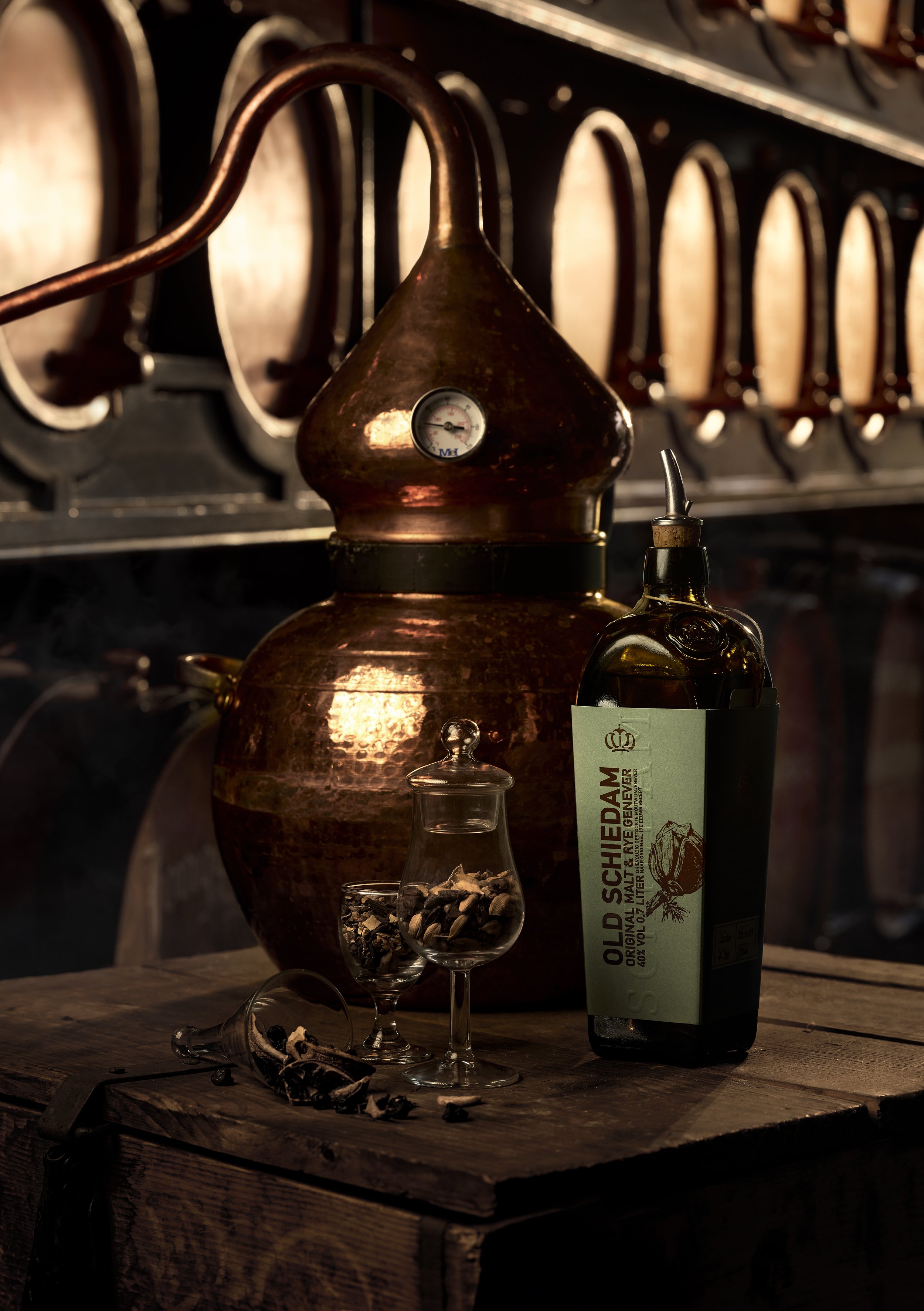














JENEVER DISTILLERS
At the end of the 17th century, Schiedam started producing jenever and quickly became a true pioneer in this market. By the 18th century, tiny Schiedam had an impressive 364 distilleries and 20 corn mills. The black smoke from the distilleries that covered all houses with a layer of ash and the miserable conditions in the town were some of the reasons why Schiedam was nicknamed ‘Black Nazareth’.
Work in the distilleries was extremely difficult. Working 16-hours a day meant the distillers were obliged to keep themselves going with their own distilled jenever. Every hour, the master distiller called his men together, after which everyone took his own jenever glass from under his cap and got a shot for energy. The glasses were footless, so sipping or putting away was not possible.
With more than 1 liter a day each, the workers were made addicted with the intention of keeping them in the distillery.
Today, Schiedam is in a much better shape, but its original identity has not disappeared. There are still 4 jenever distilleries operating that still get their malted grain from some of the 7 remaining corn mills. The citizens of Schiedam have even chosen to leave the black ash residue on their houses: ‘That’s part of Schiedam’, they believe.
The distillery ‘De gekroonde Brandersketel’ still makes jenever according to recipes from the 17th century. “This malt wine jenever is still only made by a handful of distilleries in the world. The traditional way of working makes our jenever comparable to the most expensive whiskeys in the world,” says distiller Rutger Visman.




